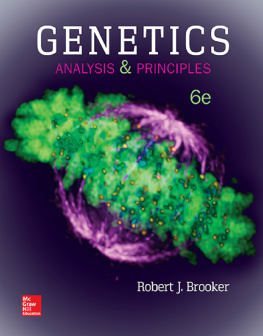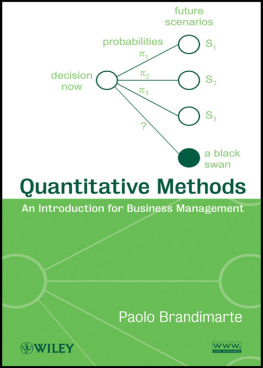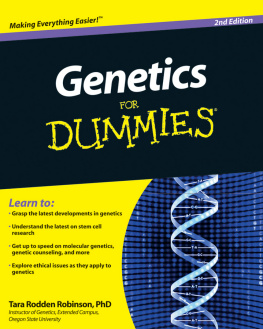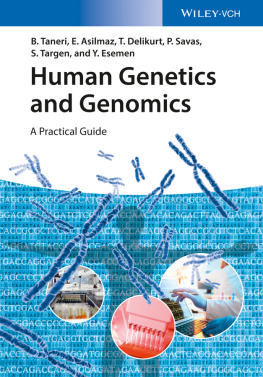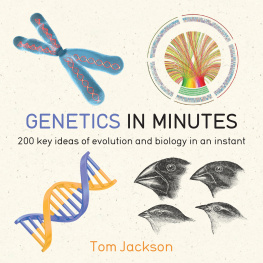Shizhong Xu (geneticist) - Quantitative Genetics
Here you can read online Shizhong Xu (geneticist) - Quantitative Genetics full text of the book (entire story) in english for free. Download pdf and epub, get meaning, cover and reviews about this ebook. year: 2021, publisher: Springer, genre: Children. Description of the work, (preface) as well as reviews are available. Best literature library LitArk.com created for fans of good reading and offers a wide selection of genres:
Romance novel
Science fiction
Adventure
Detective
Science
History
Home and family
Prose
Art
Politics
Computer
Non-fiction
Religion
Business
Children
Humor
Choose a favorite category and find really read worthwhile books. Enjoy immersion in the world of imagination, feel the emotions of the characters or learn something new for yourself, make an fascinating discovery.
- Book:Quantitative Genetics
- Author:
- Publisher:Springer
- Genre:
- Year:2021
- Rating:3 / 5
- Favourites:Add to favourites
- Your mark:
- 60
- 1
- 2
- 3
- 4
- 5
Quantitative Genetics: summary, description and annotation
We offer to read an annotation, description, summary or preface (depends on what the author of the book "Quantitative Genetics" wrote himself). If you haven't found the necessary information about the book — write in the comments, we will try to find it.
Quantitative Genetics — read online for free the complete book (whole text) full work
Below is the text of the book, divided by pages. System saving the place of the last page read, allows you to conveniently read the book "Quantitative Genetics" online for free, without having to search again every time where you left off. Put a bookmark, and you can go to the page where you finished reading at any time.
Font size:
Interval:
Bookmark:
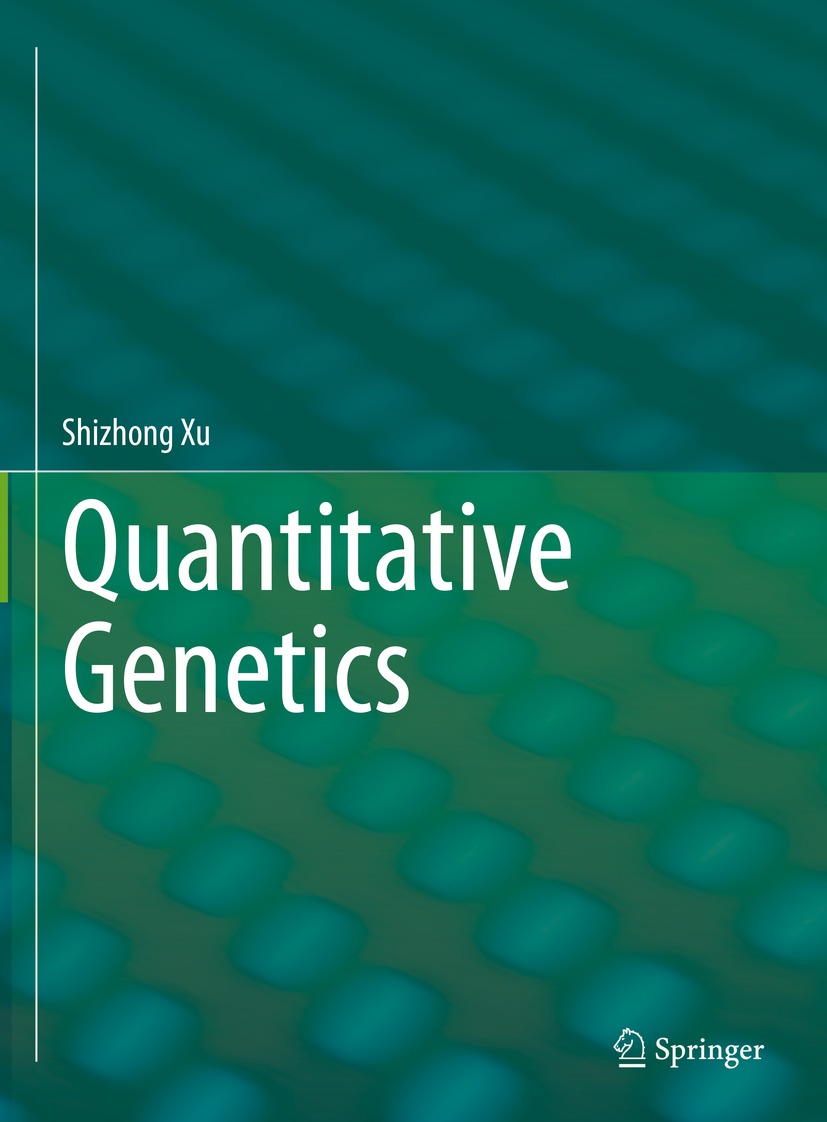

This Springer imprint is published by the registered company Springer Nature Switzerland AG
The registered company address is: Gewerbestrasse 11, 6330 Cham, Switzerland
Polygenic traits are those controlled by multiple loci. Most economically important traits in plants and animals are polygenic in nature. Many disease traits are also polygenic although some disease phenotypes may appear to be categorical. Quantitative genetics is an area of genetics that studies the genetic basis of polygenic traits. Because the variation of a polygenic trait, by definition, is collectively controlled by multiple loci, tools commonly used in classical Mendelian genetics are not sufficient for analysis of polygenic traits. Advanced statistical tools play an important role in quantitative genetics. Although the term expectation in statistics is easy to understand, terminology such as variance and covariance are the foci of quantitative genetics. Therefore, the properties of variance and covariance are fundamentally important in understanding all equations presented in the textbook. A whole chapter (Chap. 4) is dedicated to statistical review, especially variance (covariance) and its properties.
I have been teaching Quantitative Genetics (BPSC 148) as an undergraduate course at the University of California, Riverside, since 1995. This textbook is a collection of lecture notes for this course. Material and methods are mainly extracted from Falconer and Mackay (1996) and Lynch and Walsh (1998). Some topics are adopted from the 1987 handouts of Quantitative Genetics (AGR/ANSC 611) by Professor Wyman E. Nyquist at Purdue University. The Quantitative Genetics course at UCR is offered for one quarter (10 weeks) annually. The Lynch and Walsh (1998) book is too much as a textbook for this one-quarter course. The Falconer and Mackay (1996) book is about the right size but derivations of important equations are often not provided. I selectively adopted topics from both books and extended these topics in detail by providing derivations for some fundamentally important equations. More importantly, the book provides sample data and SAS code for analyses of these data. The statistical analysis system (SAS) is a suite of analytics software. It is the largest private software company in the world with the best technical support system. The SAS products are more reliable than products from all other software companies. This is why I chose SAS as the analytic tool for data analysis.
Unlike the introductions of other quantitative genetics textbooks, the introduction (Chap. 1) of this book presents two examples about breeding values and their applications to plant and animal breeding. In addition, the chapter describes the relationship between quantitative genetics and statistics. Major statistical methods that are commonly used in quantitative genetics are mentioned briefly in the introduction chapter. Chapters 24 review Mendelian genetics, population genetics, and statistics. The actual quantitative genetics starts at Chap. 5 by defining various kinds of genetic effects followed by definitions of genetic variance and its variance components in Chap. 6. Genotype by environment (GE) interaction is discussed in Chap. 7 where environmental variation is classified into systematic error and random error. Much of the content of GE interaction is adopted from Professor Nyquists 1987 lecture notes for Quantitative Genetics. Chapter 8 introduces the concept of major genes and describes methods of major gene detection and segregation analysis, a topic not often seen in quantitative genetics textbooks. Chaps. 911 cover theory and methods for estimation of heritability, primarily adopted from Falconer and Mackay (1996). Methods of kinship matrix calculation are added to Chap. 11 where the Inbreed Procedure in SAS is used to calculate kinship matrices for arbitrarily complicated pedigrees. Linear mixed models (LMM) are introduced in Chap. 12 for estimation of variance components from pedigree data. PROC MIXED in SAS is used to implement the mixed model analysis. Multiple traits and genetic correlation between multiple traits are discussed in Chap. 13. Theory and methods of artificial selection are covered by Chaps. 1416, followed by methods of multiple trait selection by Chap. 17. The last three chapters cover quantitative trait locus (QTL) mapping, genome-wide association studies (GWAS), and genomic selection (GS). The three topics belong to molecular quantitative genetics and molecular breeding and are often ignored in classical quantitative genetics.
This book can be used as a textbook for quantitative genetics courses for both undergraduate and graduate teaching. For undergraduate teaching, instructors can skip the derivation steps and directly present the final forms of equations. Some contents can also be ignored for undergraduate teaching, e.g., calculation of the standard error of an estimated heritability from family data. For graduate teaching, derivations are important part of the teaching and can improve the depth of understanding of the course material, and thus should not be skipped. The book can also be used as a reference book for experimental quantitative geneticists, plant and animal breeders, theoretical quantitative geneticists, population geneticists, and even biologists who are interested in quantitative methodology and statisticians who are looking for examples of statistical methods that are often applied to biology. The book may be particularly useful as a reference book for junior faculty as instructors of quantitative genetics, even if it is not used as the textbook for students.
I sincerely thank my graduate advisor for my MS degree, Professor Zhilian Sheng, who introduced me to this wonderful area of genetics (quantitative genetics). I learned his pooled analysis of sib correlation from multiple farms for estimating heritability and genetic correlation when I was a graduate student at Northeast Agricultural University under his supervision. Professor Sheng called his method the within-unit sib analysis. After I started my PhD program in the USA, I learned the method of restricted maximum likelihood method (REML) for estimation of variance components and immediately realized that the pooled analysis of sib correlation is identical to the REML method. The REML method was formally published in 1971 by Patterson and Thompson while Professor Sheng already used the idea of REML for estimating genetic parameters in the mid-1960s. Professor Sheng formally published his within-unit method for sib correlation analysis in 1980 when REML was not well known to the majority of statisticians. My whole quantitative genetics career benefited from the 3-year training under Professor Shengs supervision. I continued my training in quantitative genetics under the supervision of Professor William M. Muir at Purdue University. Not only did Professor Muir teach me all the analytical skills of quantitative genetics, but he also taught me the SAS programming, which allowed me to successfully compete for a student statistical consulting position at Purdue to support my family during the difficult years as a PhD student. I am extremely grateful to Professor Muir for his continued supervision during my whole quantitative genetics career. The third person who was important to my quantitative genetics research and teaching career was Professor Wyman Nyquist at Purdue University. He taught me Quantitative Genetics (AGR/ANSC 611) and Statistical Genetics (AGR/ANSC 615). He was the greatest educator I have ever met and his influence on my academic career was lifelong. My written and teaching styles are primarily inherited from his. Without the above three influential mentors, I might have taken a different career path other than quantitative genetics. Without a career in quantitative genetics, I would not have the opportunity to teach quantitative genetics and to write this textbook.
Font size:
Interval:
Bookmark:
Similar books «Quantitative Genetics»
Look at similar books to Quantitative Genetics. We have selected literature similar in name and meaning in the hope of providing readers with more options to find new, interesting, not yet read works.
Discussion, reviews of the book Quantitative Genetics and just readers' own opinions. Leave your comments, write what you think about the work, its meaning or the main characters. Specify what exactly you liked and what you didn't like, and why you think so.



